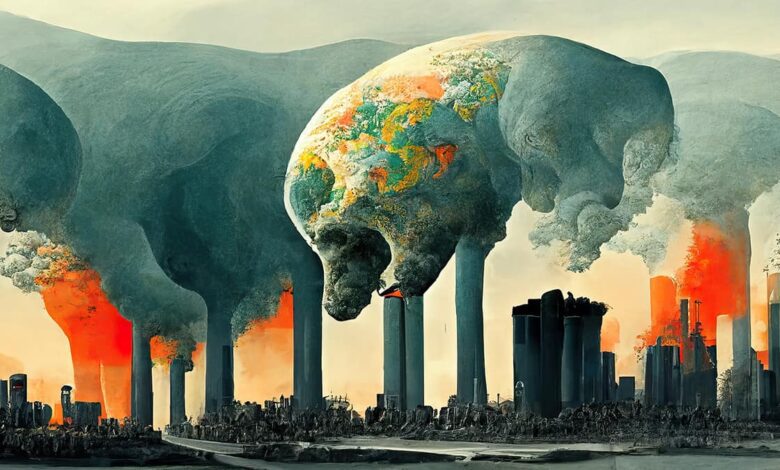From nuclear fallout to microplastics and greenhouse gases, earth enters ‘Anthropocene’
Scientists reveal compelling evidence of human influence on the planet, from radioactive remnants to soaring greenhouse gases, marking the onset of the Anthropocene epoch

Scientists argue that human’s profound impact on the planet necessitates the recognition of a new geological epoch called the Anthropocene. Evidence of human influence, such as rising greenhouse gases, microplastics, pervasive chemicals, and the disruption of global ecosystems, supports this claim.
Even seemingly remote locations like the Pine Island glacier in Antarctica reveal signs of human presence. Traces of plutonium, remains of nuclear weapon tests, were discovered beneath the glacier’s ice, highlighting an unusual radioactive legacy that began in 1945 and serves as a distinct marker for the start of the Anthropocene epoch.
The Anthropocene Working Group, chaired by British geologist Jan Zalasiewicz for over a decade, is set to announce its selection for the “golden spike” location, representing the most comprehensive portrayal of humanity’s impact on Earth. The official recognition of the Anthropocene as a geological time unit awaits further investigation from the global community of geologists.
The rapid surge in carbon dioxide and other greenhouse gases emerges as a prominent characteristic of the Anthropocene. Since 1950, human energy consumption has surpassed that of the previous 11,700 years of the Holocene epoch. This newfound power facilitated human dominance, resulting in extensive exploitation of land and animals to sustain the growing population.
Shockingly, humans and their livestock constitute 96 percent of the biomass of all land mammals, leaving a mere four percent for wild mammals. Supermarket chickens, selectively bred by humans for larger sizes, account for two-thirds of all bird biomass. Humans have also reshaped ecosystems by introducing invasive species to remote islands, such as rats in the Pacific.
The cumulative mass of human-made objects now outweighs the combined weight of all living organisms on the planet. Microplastics, tiny plastic particles, have been discovered on the highest mountaintops and in the deepest ocean trenches. The presence of ‘forever chemicals’, such as PFAS used in non-stick cookware, is increasingly widespread.
The Anthropocene epoch will leave a lasting imprint on Earth’s geological record, providing future generations or other observers with insights into this human-dominated era for hundreds of thousands of years to come.



